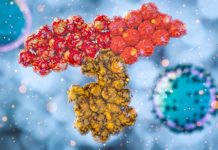A small sub-set of T-cells that are likely to play a key role in whether treatment in children with leukaemia is successful has been discovered by scientists and clinicians at UCL and Great Ormond Street Hospital.
Experts say “stem cell memory T-cells” appear critical in both destroying the cancer at the outset and for long term immune surveillance and exploiting this quality could improve the design and performance of a type of immunotherapy called CAR T-cell therapies.
T-cells are immune cells which play an important part in fighting infection and diseases, including cancer. In CAR T therapy, T-cells are genetically engineered to contain a molecule called a chimeric antigen receptor (CAR) on their surface which can specifically recognise cancerous cells.
In their study, the team compared CAR T-cells from patients who still had CAR T-cells detectable in the blood more than two years after their treatment, with individuals who had lost their CAR T-cells in the one to two months post treatment. Using a technique called “insertion site barcoding” researchers were able to study the fate of different types of CAR T-cells in patients after they were given.
The authors of the study, published in Nature Cancer, said the new insight could help them improve their CAR T-cell therapy and work out which patients are at a higher risk of relapse and may benefit from a stem cell transplant after such therapy.
Co-author Dr Martin Pule, who develops CAR T therapies at his lab at UCL Cancer Institute, said: “This research opens up new avenues to improve CAR design and manufacture, improving the performance of CAR T-cell therapy, to achieve a combination of early tumour clearance and long-term protection from relapses in patients with B cell leukaemia.”







